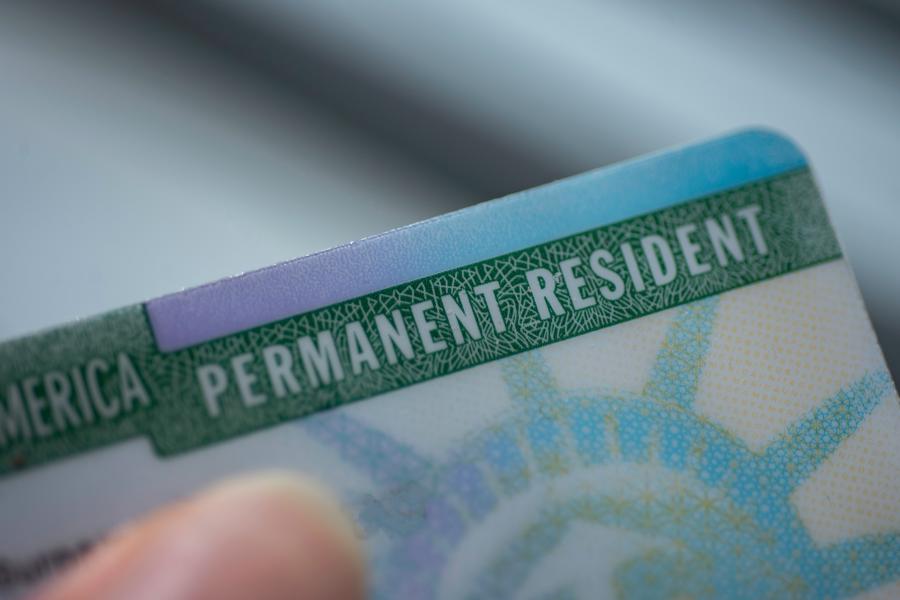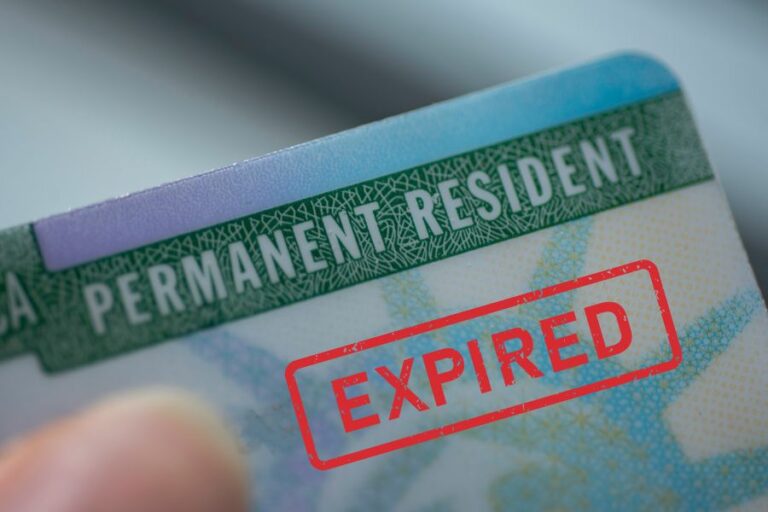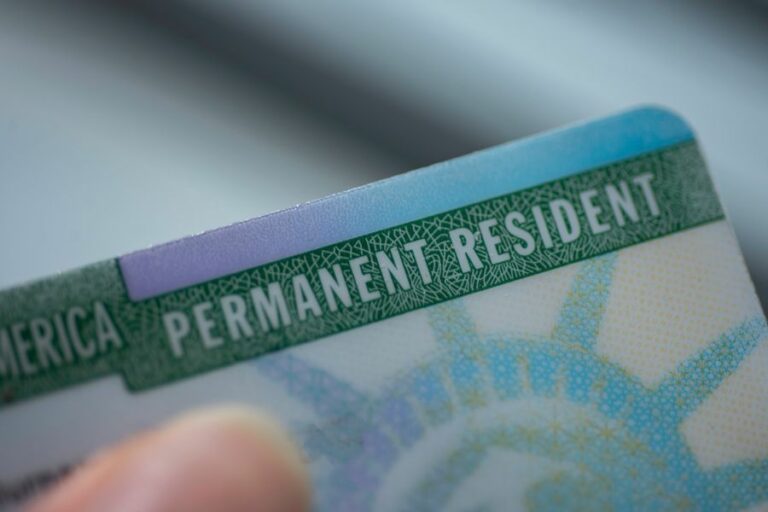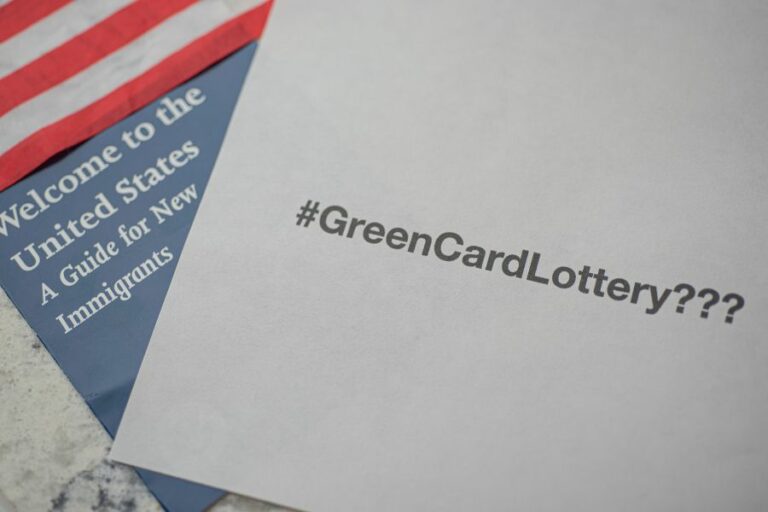Green Card Processing Times By Type of Green Card
Obtaining a U.S. green card, a hallmark of the American immigrant’s journey, can be both an exhilarating and intricate experience. The duration of this process is often a significant concern for aspirants, as it is shaped by a myriad of factors, from one’s relationship to a U.S. sponsor to country-specific quotas.
With hopes and dreams hinging on timelines, understanding the intricacies of green card processing times is crucial. In this article, we’ll clarify the timelines, delve into the key influencing factors, and offer insights to help prospective green card applicants set realistic expectations.
Current Average Green Card Processing Times (By Type of Green Card)
The timeline for obtaining a permanent resident card can range from several months to multiple years, influenced by the specific green card category in question and the applicant’s location.
On average, and across the various green card categories, the start to finish (processing time) is 18-24 months.
It’s important to know that certain green cards have an annual cap on admissions in the United States. Consequently, your application might be queued until the subsequent year for processing. For instance, processing times for some family-based green cards can extend up to a decade. Hence, it’s advisable to apply at your earliest convenience.
| Type of Green Card: | Current Avg. Processing Time: |
|---|---|
| Family-Based Green Card | 12.5 – 20.5 months (living within US) 13.75 – 15.5 months (living outside US) |
| Employment-Based Green Card | 10 – 36 months |
| “Humanitarian” Green Card | 12 – 24 months |
| Diversity Green Card (“Lottery”) | Notified 7 months after submitting their entry Up to 14 months to receive visa |
| Returning Resident (SB-1) | 3 – 6 months |
| Long Time Resident Green Card | Must live in US since January 1, 1972 (learn more below) |
Detailed estimates are outlined further below.
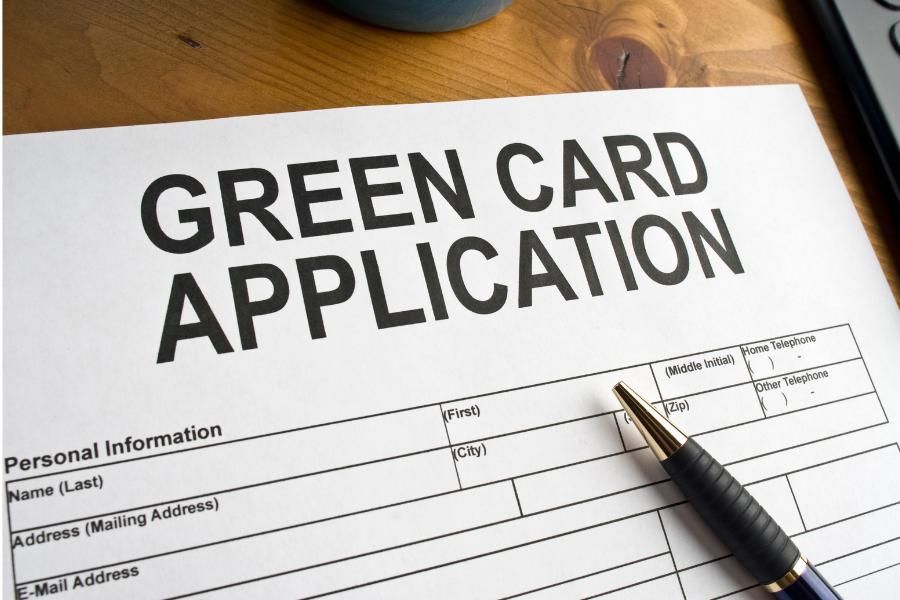
Factors That Affect Green Card Processing Times
The time it takes to get a U.S. green card (officially known as a Permanent Resident Card) can vary widely based on several factors, such as:
- Type of green card: U.S. immigration law has various categories for green card applicants, such as family-sponsored, employment-based, humanitarian (refugee, asylee, VAWA status), and more.
- Relationship to the U.S. sponsor: For example, immediate relatives (spouses, unmarried children under 21, and parents) of U.S. citizens typically have a faster route than other family-based categories.
- Country of origin: Some countries have a higher demand for green cards than others. For countries with a high demand, there may be additional waiting times due to annual limits on the number of green cards issued.
- USCIS backlogs: Sometimes, even after a petition is approved, an applicant might have to wait because the number of applicants exceeds the number of available green cards in a particular category.
- USCIS service center & processing times: The U.S. Citizenship and Immigration Services (USCIS) processing times can vary based on the specific service center handling the application, the volume of applications, policy changes, and other factors.
- Complications or requests for additional evidence: If USCIS requires more documentation or if there are any complications with the case, it can lead to delays.
- Adjustment of status or consular processing: Depending on whether the applicant is adjusting status within the U.S. or processing the visa at a consulate abroad, the timeline can differ.
We will now go over processing times in depth for the most common green card types…
Family Based Green Card Processing Times
Embarking on the path to a family-based green card in the U.S. often leaves applicants and their families eager to understand the timeline ahead.
The waiting game can span from mere months to decades, with duration greatly influenced by the nature of the familial relationship, and sometimes, the country of origin.
From marriages to siblings, each relationship category has its own set of typical wait times.
To help you navigate this maze of waiting durations, we’ve created a table with general processing times for the various family-based green card categories.
Below is more specific information about processing times for each type of family based green card scenario.
Spouses of US Citizens
The process for a marriage green card can range anywhere from 10 to 36 months. However, the averaging processing time these days are the following:
If your partner is a U.S. citizen and you reside in the United States, the current processing time for USCIS to grant permanent resident cards is between 18 to 22 months.
- The procedure is generally quicker as you can simultaneously submit Form I-130: Petition for Alien Relative and Form I-485: Application for Adjustment of Status. This simultaneous submission is termed concurrent filing. Additionally, while awaiting your green card, you have the option to request a work permit and a travel authorization, commonly referred to as Advance Parole.
If your partner is a U.S. citizen and you’re residing outside the United States, the present timeframe for USCIS and the NVC to grant marriage green cards ranges between 12.5 to 26 months.
Spouses of Green Card Holders
If your partner holds permanent resident status, currently, USCIS takes roughly 18 months on average to process However, the entire procedure generally takes around 30 to 36 months.
- After this, there’s an additional waiting period until a green card slot opens up for you. You’ll be notified of this availability when your priority date is listed in the U.S. Department of State’s Visa Bulletin. Once your date appears, you have the option to request a green card either from within the U.S. or at a U.S. consulate overseas.
- Typically, the wait for a green card slot is around two years, making the entire procedure approximately three years in duration.
- The process might be lengthier for nationals from Mexico, China, India, and the Philippines.
If your partner is a green card holder and you reside outside the U.S., expect a wait of roughly 23-32 months, if not more, to obtain your green card.
Widows of US Citizens
For those who have lost a U.S. citizen spouse, the procedure typically spans 10-13 months.
Widows and widowers generally have a window of two years post their spouse’s demise to seek immigrant status. The duration for processing for widows aligns closely with the time frame set for spouses of U.S. citizens.
However, instead of using Form I-130, you’d need to submit Form I-360: Petition for Amerasian, Widow(er), or Special Immigrant. If your spouse had already initiated an I-130 petition on your behalf that received approval before their passing, there’s no need for you to submit Form I-360. You only need to notify USCIS about your spouse’s death, and they will handle your application under the widow(er) category.
Parents of US Citizens
For individuals who are parents of U.S. citizens, the typical processing time is between 10-13 months.
This category doesn’t have a cap on the number of green cards distributed. As a result, obtaining a green card through the parent-child relationship is often achievable within a year.
Minor Children of US Citizens
For U.S. citizens’ minor children (those below 21 years of age), the standard procedure usually spans between 10-13 months.
Since there’s no annual cap on immigrant visas for U.S. citizens’ offspring under 21, many achieve green card status within a year following the initiation of the immigrant petition.
Minor Children of Green Card Holders
For green card holders’ minor children, the typical processing duration is 23-38 months.
After the sponsor submits Form I-130, there’s a waiting period until a green card slot opens. These children can apply for a green card either domestically or internationally. They’re grouped under the same category as spouses of green card holders, so USCIS processing times are often quicker in comparison.
In general, the wait for a green card slot is around two years, making the complete process roughly three years.
Citizens from countries like Mexico, China, India, and the Philippines might experience longer waits due to higher application volumes each year.
Unmarried, Adult Children of US Citizens
For U.S. citizens’ unmarried adult offspring, the process usually extends for 7-8 years.
However, Philippine citizens might find themselves waiting over 10 years, while Mexican citizens could be looking at a wait of over 20 years. These adult children need to await their turn after their parent submits Form I-130, with significant backlogs being a common occurrence.
Unmarried, Adult children of Green Card Holders
For green card holders’ unmarried adult children: The typical duration is 8-9 years.
Still, those from the Philippines might be looking at over 10 years, and Mexican nationals could anticipate over 20 years.
Married Adult Children of US Citizens
For U.S. citizens’ married adult children, they might be in for a 13-14 year process.
Yet, for those hailing from the Philippines or Mexico, the wait could extend beyond 22 years.
Siblings of US Citizens
For siblings of U.S. citizens, the typical processing duration is between 14-16 years.
However, the wait can vary based on one’s country of origin:
- Indian nationals might face a processing time of over 16 years.
- For those from Mexico, the wait could extend beyond 20 years.
- Philippine citizens might be looking at a duration of more than 24 years.
It’s worth noting that only the green card categories for parents, spouses, and minor children are exempt from annual quotas.
Related: 7 Ways to Get a Green Card Without Marriage
Employment Based Green Card Processing Times
Navigating the path to U.S. residency through employment can be intricate. Processing times vary widely based on the specific employment-based (EB) category in which one applies.
Employment-based green cards are divided into distinct categories, each catering to a particular group of professionals or workers.
From individuals with extraordinary abilities to skilled workers, each category has its own set of requirements and wait times.
Below, we delve into each employment-based green card category, providing a snapshot of its respective processing times. Click on each type for a detailed breakdown and insights to better understand your potential timeline.
EB-1 (extraordinary ability, outstanding professors/researchers, multinational managers)
Processing Time: Average ranges from 8 to 18 months. However, many people are experiencing faster processing times, with 4-5 months being the fastest. On the flip side, it can take up to 36 months for some people waiting for an EB-1 visa.
The EB-1 visa is a preference category for U.S. employment-based permanent residency. It’s intended for “priority workers” which includes:
- People with extraordinary ability in the sciences, arts, education, business, or athletics.
- Outstanding professors or researchers.
- Multinational managers or executives.
Applicants either have to demonstrate a high level of achievement and recognition in their respective fields (like major awards) or fit the criteria for the latter two categories. The EB-1 visa often has shorter waiting times compared to other employment-based green card categories.
EB-2 (advanced degree professionals, exceptional ability)
Processing Time: Average ranges from 12-24 months, but can be longer for certain countries.
The EB-2 visa is a preference category for U.S. employment-based permanent residency. It’s designed for:
- Professionals holding advanced degrees (or their equivalent) and
- Individuals with exceptional ability in the arts, sciences, or business.
Applicants typically must have a job offer and the potential employer must complete the labor certification process. However, exceptions can be made for those with exceptional ability or if it’s in the U.S. national interest. The EB-2 visa generally has a longer wait time than the EB-1 but can be shorter than other categories, depending on the applicant’s country of origin.
EB-3 (skilled workers, professionals, and unskilled workers)
Processing Time: Average is 12-36 months, with potential longer waits for some countries.
The EB-3 visa is a preference category for U.S. employment-based permanent residency. It’s aimed at:
- Skilled workers with at least 2 years of experience or training.
- Professionals with a U.S. bachelor’s degree or foreign equivalent.
- Unskilled workers (Other Workers) for positions that require less than 2 years of training or experience.
Applicants usually need a job offer, and the employer must undergo the labor certification process. The EB-3 visa generally has longer waiting times than the EB-1 and EB-2 categories, especially for certain countries with high demand.
EB-4 (special religious workers and other special immigrants)
Processing Time: There really is no average. It can be 4 months to 4 years, depending on the situation and demand.
The EB-4 visa is a preference category for U.S. employment-based permanent residency. It’s designated for “special immigrants,” which includes a variety of specialized groups such as:
- Religious ministers and certain members of religious organizations.
- Employees of U.S. foreign service posts.
- Retired employees of international organizations.
- Certain U.S. military members.
- Certain translators or interpreters.
- Others who fall into narrower categories like juvenile court dependents or broadcasters.
The specifics and requirements vary for each subgroup within the EB-4 category. This visa doesn’t typically face the extensive backlogs seen in some other employment-based categories.
EB-5 (investors)
Processing Time: On average, investors can get an EB-5 visa within 24 to 60 months.
The EB-5 visa is a preference category for U.S. employment-based permanent residency. It’s designated for investors who:
- Invest $1 million (or $500,000 in a targeted employment area) in a new commercial enterprise in the U.S.
- Plan to create or preserve at least 10 full-time jobs for qualifying U.S. workers.
This program is intended to stimulate the U.S. economy through job creation and capital investment by foreign investors. The specific investment amounts can vary based on where the investment is made, with rural or high-unemployment areas often requiring a lower amount.
Humanitarian Green Card Processing Times
While there’s no single “humanitarian” green card, several visa types offer a path to permanent residency for people in need. Each has its own set of criteria and processing times:
Refugees and Asylees
Individuals fearing persecution in their home countries can apply for refugee status from abroad or seek asylum in the U.S. After living in the U.S. for at least a year, they can apply for a green card. Family members may also be eligible.
Processing Time: Typically, it takes several months to a few years to be granted refugee or asylum status, largely depending on the urgency and specifics of the case. After a year of living in the U.S., these individuals can apply for a green card, which might take an additional 6-12 months to process.
Human-Trafficking Victims (T-Visa)
Those who’ve fallen victim to trafficking can apply for a T visa, which allows a four-year stay. To transition to a green card, they need to live in the U.S. for either three years after receiving the T visa or the duration of an investigation or prosecution of trafficking. Additional criteria like good moral character apply.
Processing Time: Initial visa processing times can vary but often take between 6 months to a year. The transition from a T visa to a green card usually requires at least three years of residence in the U.S., plus additional processing time for the green card itself.
Crime Victims (U-Visa)
Victims suffering substantial abuse can apply for a U visa. This requires a law enforcement agency to certify their application. After living in the U.S. for at least three years on a U visa, they can apply for a green card if they meet other conditions, such as not refusing to help in investigations.
Processing Time: The U visa has one of the longest waiting lists, with some estimates suggesting waits of up to 4-5 years just for the initial visa approval. Once approved, the individual must live in the U.S. for three years before applying for a green card, which could add another year for processing.
Domestic Abuse Victims (VAWA)
Those enduring domestic abuse can apply for a green card under the Violence Against Women Act (VAWA), which also includes men and children. They can apply independently of their abuser, who is not notified of the application.
Processing Times: It varies, but the initial VAWA self-petition may take anywhere from 6 months to a year or more for approval. Following that, the adjustment of status to get a green card typically takes another 6-12 months.
Remember, these are approximate figures and actual processing times can differ. It’s also essential to meet all eligibility criteria during these waiting periods. For the most current information, it’s advisable to consult with legal professionals or refer to the USCIS website.
Diversity “Lottery” Green Card Processing Times
The Diversity Visa Lottery, often known as the Green Card Lottery, is a U.S. government program that annually awards green cards to individuals from countries with historically low levels of immigration to the United States.
The program aims to diversify the U.S. immigrant population by providing an immigration opportunity to underrepresented nations.
Processing Times: Those who win the green card lottery usually hear back about 7 months after submitting their entry. After being selected, the interview and visa issuance process can take as long as 14 months, depending on how quickly you proceed with your visa application.
For instance, if you participated in the 2023 green card lottery during its registration window (October-November 2021), the results would likely be released around May 2022. Your visa application would be restricted to fiscal year 2023, which runs from October 1, 2022, to September 30, 2023. Applying earlier within this period typically means you’ll have your visa interview and receive your visa sooner.
Once your visa is issued, you have to enter the U.S. by the expiration date indicated on the visa. Generally, a Diversity Visa remains valid for up to six months from the date of issuance.
Applicants enter the lottery online, and if selected, go through a screening process that includes an interview, background checks, and medical exams.
Winners are selected randomly and, if approved, are granted a U.S. green card, which allows them to live and work permanently in the United States.
For the 2023 application period, nationals from the following countries were NOT eligible to apply:
- Bangladesh
- Brazil
- Canada
- China (including Hong Kong SAR)
- Colombia
- Dominican Republic
- El Salvador
- Haiti
- Honduras
- India
- Jamaica
- Mexico
- Nigeria
- Pakistan
- Philippines
- South Korea
- United Kingdom (except Northern Ireland) and its dependent territories
- Venezuela
- Vietnam
For more information, the State Department provides a list of all eligible countries.
If your country of origin doesn’t qualify for the Diversity Visa, you have two alternative routes to be eligible:
- If your spouse hails from an eligible country, you can submit a joint application and select your spouse’s country of birth on the form.
- If both of your parents were not legal residents of the country where you were born, you have the option to pick the birth country of either your mother or father for your application.
Returning Resident (SB-1 Visa) Processing Times
A Returning Resident Visa, also known as an SB-1 visa, is for lawful permanent residents (green card holders) who have stayed outside the United States for an extended period and wish to return to the U.S. to resume their permanent residence.
This visa is necessary when the individual has remained abroad for reasons beyond their control, causing their green card to expire or become invalid for re-entry.
The SB-1 visa allows them to return to the U.S. and continue their permanent resident status.
Processing Times: A lawful permanent or conditional resident who has been outside the U.S. for over a year needs to secure a new immigrant visa to return. This process usually takes between 3 and 6 months to finish.
Long Time Resident Green Card Processing Times
People who have resided in the United States continuously since January 1, 1972—whether with legal status or as undocumented individuals—can seek a green card through a unique process known as “registry.”
To become eligible for a green card via registry, individuals must satisfy the following requirements:
- They must have initially arrived in the U.S. before January 1, 1972, substantiated by an official I-94 Arrival/Departure Record.
- They haven’t departed the U.S. since their initial arrival.
- They maintain “good moral character,” which means they haven’t engaged in specific criminal activities such as fraud, prostitution, or murder.
- They are qualified to become U.S. citizens through the naturalization process.
- They haven’t engaged in criminal conduct that would render them deportable, like drug offenses, smuggling, or marriage fraud.
- They haven’t committed offenses that would make them ineligible for a green card. Such as illegal entry or overstaying a visa for more than six months.
Note: It is highly unlikely that the date of initial arrive will be pushed forward. So, this category is ever-shrinking in numbers.
Green Card Timelines on Reddit
There is a subreddit called r/USCIS, which if you aren’t familiar, you should check it out as the forum can be informative and inspiriting.
There is one common thread called “Timeline“.
In short, people share their green card timeline, step-by-step, from start to finish. Essentially, it is just a screenshot of the app used to follow the steps provided by USCIS, in which it shows how long each step took in the green card process.
Here are a couple examples:


We highly recommend staying tuned to the USCIS subreddit.
Green Card Processing Time FAQs
The time it takes to receive approval for a U.S. green card varies based on the specific category you apply under. On average, both marriage and employment-based visas experience a waiting period of 18-24 months from the point of application to finalization.
The duration of the green card process varies depending on the kind of green card and your country of origin. Generally, immediate family members like spouses or children of U.S. citizens tend to have the shortest waiting periods. Some employment-based visas also offer relatively quick processing times.
People from India, China, Mexico, and the Philippines usually encounter more extended waiting periods compared to individuals from other nations.
Yes, but to stay legally in the U.S. while your green card is pending, you need to file for an Adjustment of Status.
Once your case is approved, it usually takes 2 to 4 weeks to receive the physical green card.
You can apply for U.S. citizenship after holding a green card for five years; or three years if you’re married to a U.S. citizen.
A replacement green card typically takes about 3 to 6 months to process.
Renewing a green card usually takes approximately 6 to 12 months.
After a successful interview, it usually takes about 2 to 4 weeks to receive your green card.
There’s no set time. But it typically takes several months after the biometrics appointment for the green card to be issued, depending on the category and other factors.
Yes, processing times can be longer for applicants living outside the United States, mainly due to additional steps like consular processing.
No, green cards are not issued immediately. The process involves multiple steps and varies depending on the type of green card and individual circumstances.
As of 2022, the processing times for a marriage-based green card range from 10 to 38 months.
No, you still have to apply for an IR-1 visa.
The anticipated time frame for processing a family-based I-485 is around 8 to 14 months.
Your priority date is set on the day the USCIS receives your I-130 form.
A family-based green card is valid for a decade.
The wait time for such cases is approximately 23 to 36 months.
To sponsor a spouse, green card holders must first file Form I-130. The estimated processing time for spousal sponsorship is about 29 to 38 months if the spouse is in the U.S.
If you are a U.S. citizen, your spouse can apply for a K-3 non-immigrant visa to reside in the U.S. while the I-130 is being processed.
To be a sponsor, you must be at least 21 years old and either be a U.S. citizen or a green card holder.
For parents of U.S. citizens, the processing time can range from about 10 to 24 months, depending on individual circumstances and application backlogs.
After your VAWA (Violence Against Women Act) case is approved, it generally takes a few months to a year to get your green card, depending on various factors.
The EB-2 green card processing time can vary widely, but it generally takes about 1 to 2 years, depending on your country of birth and other factors.
The time between getting an Employment Authorization Document (EAD) and a green card can vary, but it’s often several months.
Summary:
The journey to obtaining a U.S. green card can be a long and complex process, replete with numerous steps and varying wait times. From marriage-based green cards to employment and humanitarian categories, the time frame can range from a few months to several years.
These estimations are not set in stone and can fluctuate due to a myriad of factors including application volume, individual circumstances, and changes in immigration policies.
It’s crucial to remain updated with the most current information, either by regularly checking the USCIS website or consulting with immigration professionals. Timely and accurate knowledge can help you better prepare and set realistic expectations, making the challenging path to permanent residency a bit easier to navigate.
While the wait can be daunting, the reward—a life in the United States with the opportunities and security that come with permanent residency—is often well worth the time and effort invested. Thank you for reading, and best of luck on your journey to becoming a U.S. permanent resident.
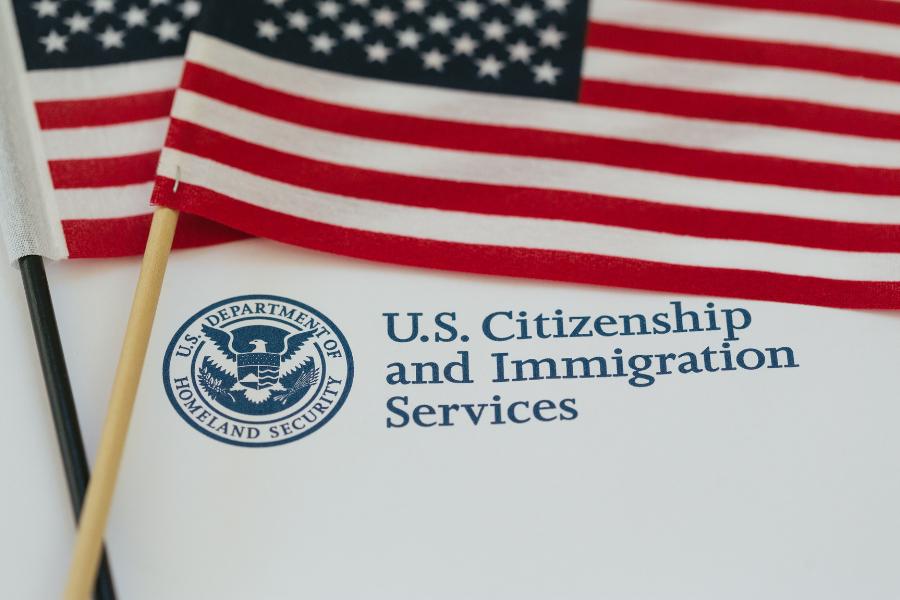
References:

